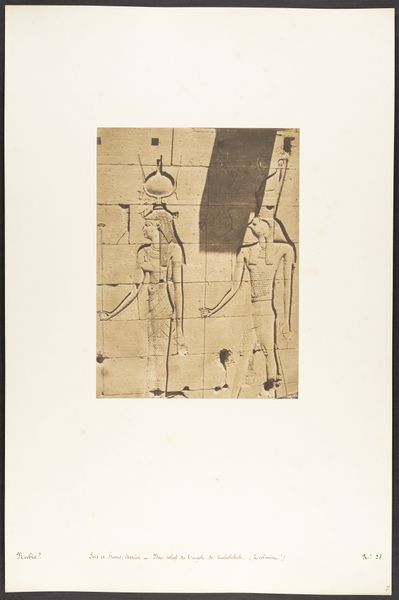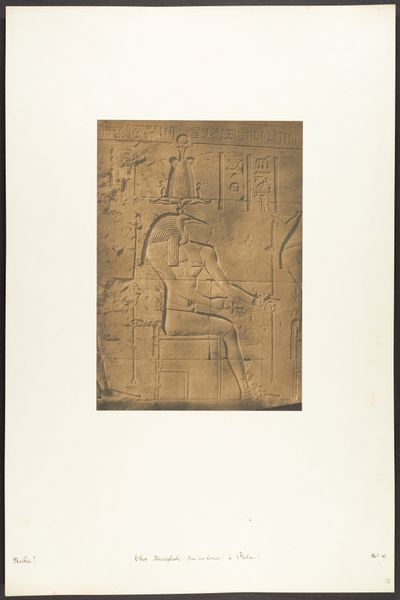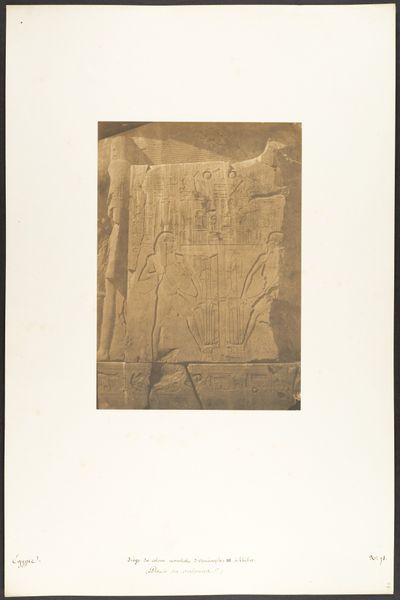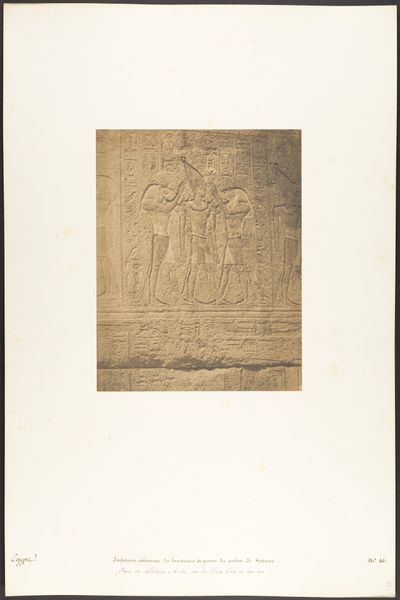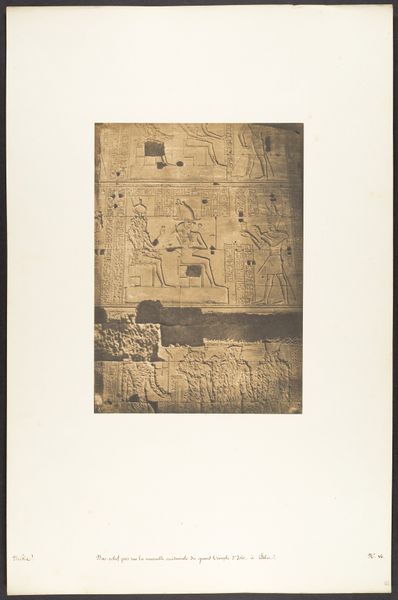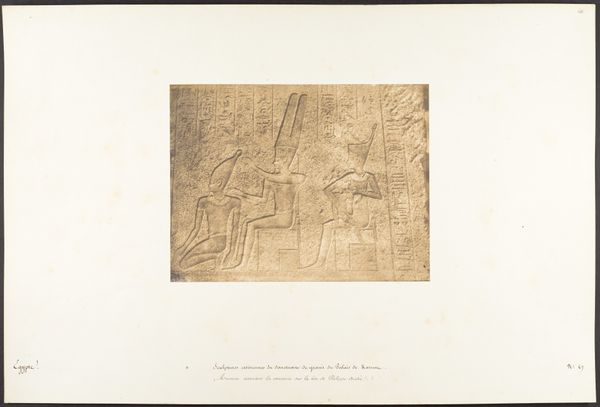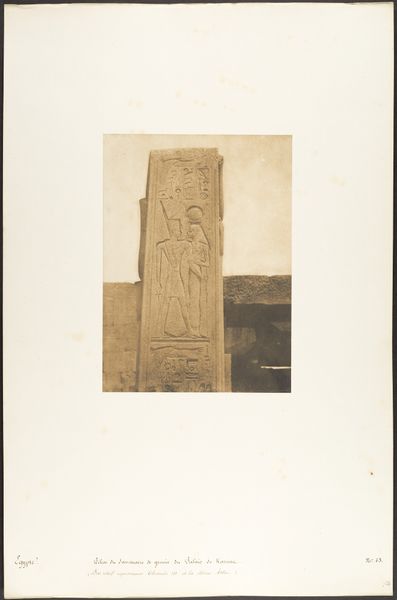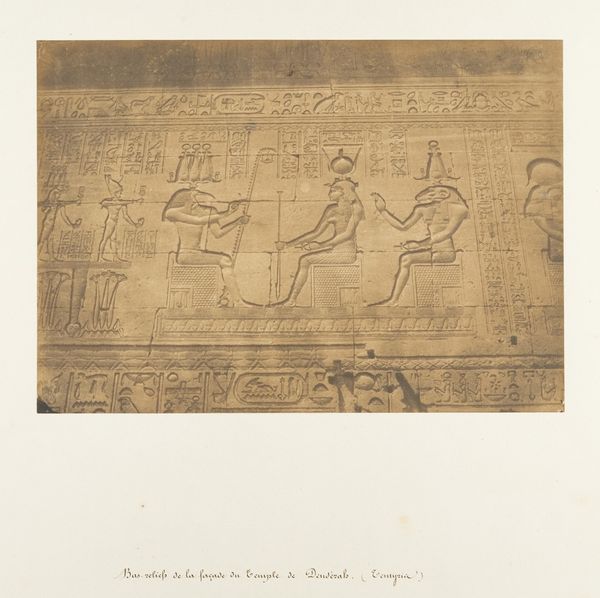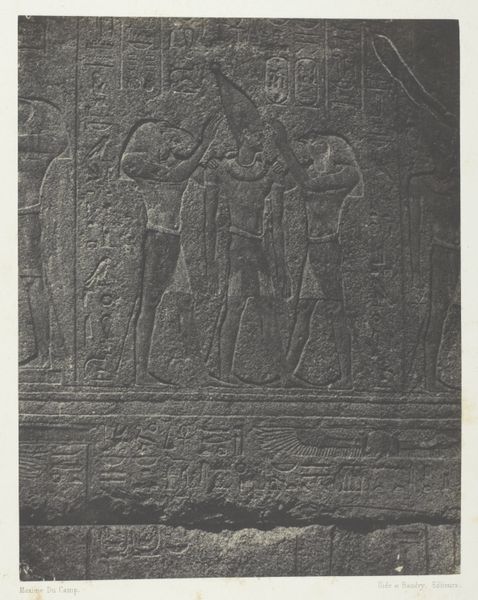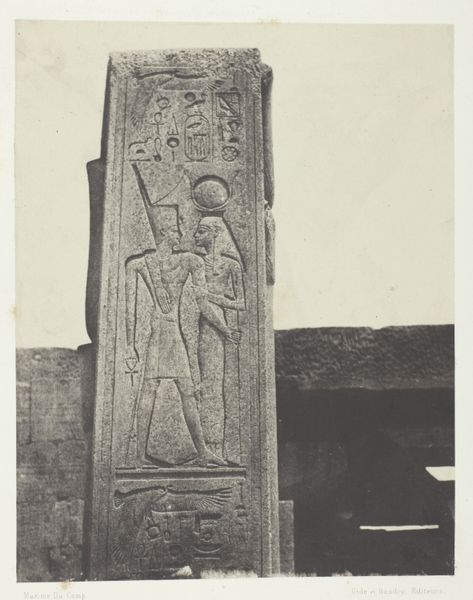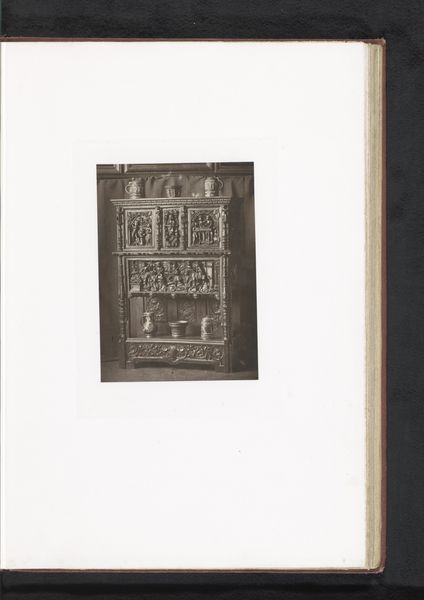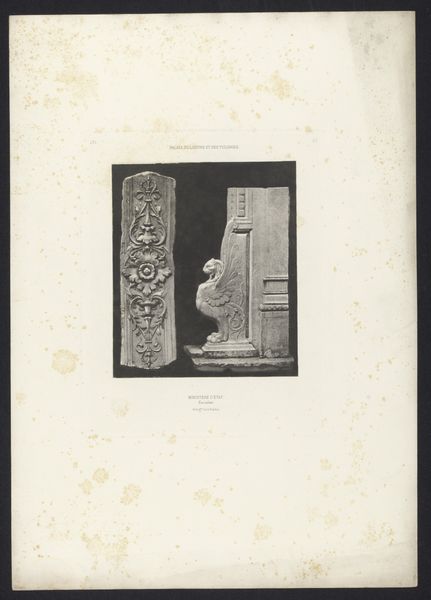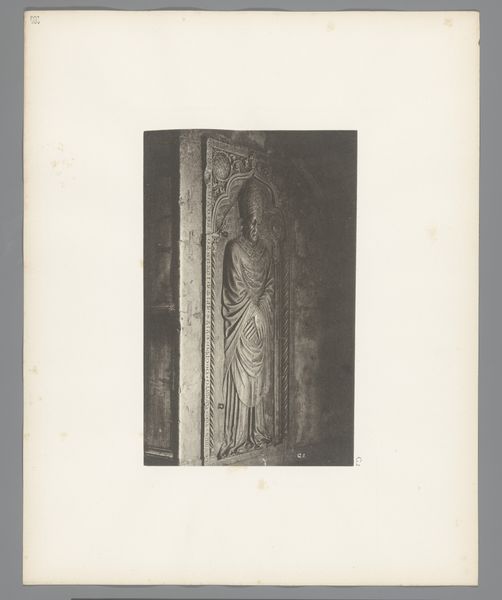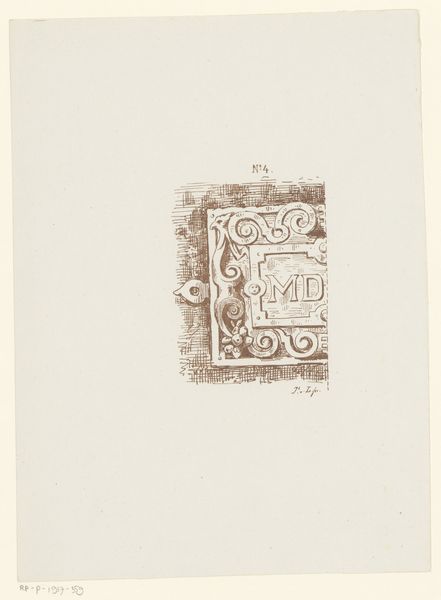
Pilier du Sanctuaire de granit du Palais de Karnac (Bas-relief représentant le Pharaon Thotmès III et la Déesse Nauth) 1849 - 1850
0:00
0:00
carving, relief, photography, gelatin-silver-print, architecture
#
carving
#
relief
#
ancient-egyptian-art
#
figuration
#
photography
#
ancient-mediterranean
#
gelatin-silver-print
#
history-painting
#
architecture
Dimensions: Image: 8 3/16 × 6 1/4 in. (20.8 × 15.8 cm) Mount: 18 11/16 × 12 5/16 in. (47.5 × 31.2 cm)
Copyright: Public Domain
Maxime Du Camp made this photograph of a granite bas-relief, depicting Pharaoh Thutmose III with the Goddess Nauth, during the mid-19th century. Granite is an incredibly dense and weighty material; think of how much effort went into quarrying, transporting, carving, and erecting this pillar in the first place. The original sculpture embodies the labor and resources of an ancient society. Du Camp's photograph captures the texture and scale of the pillar and the intricate details of the carved figures, but the photograph itself also reflects a specific moment in time. The image marks the advent of photography as a tool for documentation and dissemination. It democratizes access to ancient artifacts, allowing viewers to experience the grandeur of Egyptian art without physically traveling to the site. Yet, in doing so, the photograph flattens the object, turning a monumental sculpture into a reproducible image. Considering the labor invested in both the original sculpture and the photographic reproduction encourages us to think about the varied forms of skill and value that coexist within art history.
Comments
No comments
Be the first to comment and join the conversation on the ultimate creative platform.
